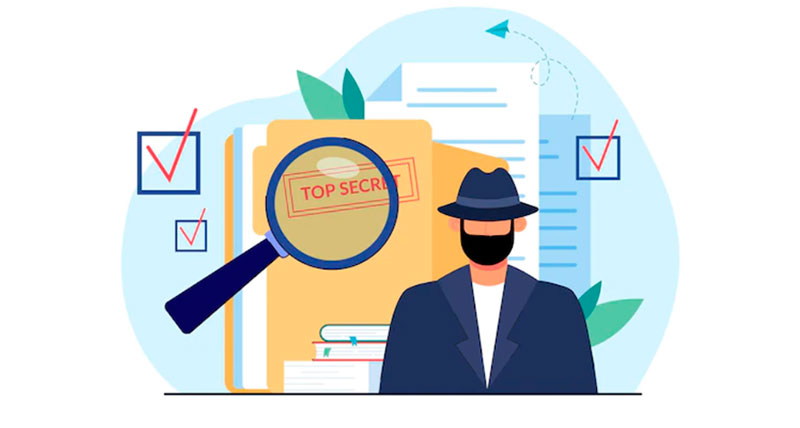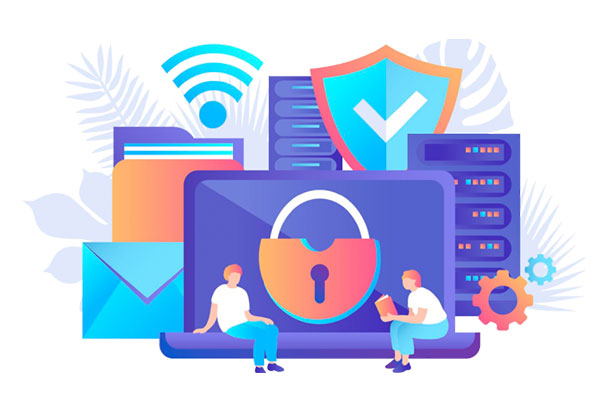Protecting Your Device: A Comparative Study of iOS, Linux, Windows, and Android Security Features
Welcome to our comprehensive analysis of the security vulnerabilities in popular operating systems. In this article, we delve into the risks associated with Android, Ubuntu Linux, Mac OS X, and Windows 10, shedding light on the measures implemented by their respective vendors to ensure a secure computing environment. Understanding these vulnerabilities is crucial in making informed decisions about operating system choices and safeguarding your digital assets.
In today’s interconnected world, device security has become paramount. With the proliferation of smartphones, tablets, and computers, it is crucial to choose an operating system (OS) that offers robust security features. This article aims to provide a comprehensive study of the security features of four popular operating systems: iOS, Linux, Windows, and Android.
By comparing and contrasting their security capabilities, readers will gain insights into the strengths and weaknesses of each OS, enabling them to make informed decisions about protecting their devices.
iOS Security Features

When it comes to mobile security, iOS has set a high standard. The stringent security measures implemented by Apple provide a strong defense against potential threats.
| Security Features of Apple iOS |
| Physical Security |
| – All iPhones and iPads running iOS 8.0 and above have strong security methods, preventing information retrieval from locked devices. |
| – Mechanisms for remote data wiping and device locking in case of theft or loss. |
| – Unlocked or resold stolen devices are protected if the device password and owner’s Apple ID password are unknown to the intruder. |
| – Chinese craftsmen can bypass this protection for iPhone 5s and older devices by tampering with the hardware. |
| Data Encryption |
| – Multi-layer data encryption “out of the box” with unique keys for each data block. |
| – Deleted files have corresponding keys deleted, making data recovery nearly impossible. |
| – Encryption keys are stored in the Secure Enclave system’s coprocessor, inaccessible even with jailbreak attempts. |
| – Additional encryption for sensitive data like website passwords and downloaded emails in the secure Keychain. |
| Device Connectivity |
| – Limited access to data when connecting an iPhone to a computer, except for photos. |
| – Trust relationship establishment with computers through cryptographic keys for secure backups. |
| – Ability to restrict backup access through corporate policies or Apple’s Configurator app. |
| – Backup security ensured by setting a complex password for data restoration. |
| Device Unlocking |
| – Secure unlocking with options for a four-digit PIN, complex password, or fingerprint recognition. |
| – Fingerprint data encryption and deletion from device RAM after shutdown, reboot, extended inactivity, or unsuccessful attempts. |
| Additional Security Measures |
| – Option to automatically erase data after ten unsuccessful login attempts. |
| – Improved security measures implemented in iOS versions beyond iOS 8.2. |
Secure Boot and Secure Enclave
One of the key security features of iOS is its secure boot process. iOS devices are designed to only run trusted and verified software, ensuring the integrity of the operating system.
Additionally, iOS devices incorporate a dedicated security coprocessor known as the Secure Enclave. It provides a secure execution environment for sensitive operations like biometric authentication and cryptographic key generation.
App Sandbox and Code Signing
iOS utilizes an app sandboxing mechanism, which isolates each app from the rest of the system. This prevents malicious apps from accessing sensitive user data or compromising the OS. Furthermore, iOS enforces strict code signing requirements, ensuring that only trusted and verified apps can be installed on the device.
Data Protection and File Encryption
To protect user data, iOS implements data protection mechanisms. This includes file-level encryption, where each file is encrypted with a unique key tied to the device’s hardware. iOS also leverages hardware-based encryption capabilities, such as the Advanced Encryption Standard (AES), to secure data at rest.
App Store Review Process and Malware Protection
iOS’s App Store review process plays a crucial role in maintaining a secure ecosystem. Apple’s stringent app review guidelines help weed out potential malware and enforce strict security standards. Additionally, iOS employs various security measures, such as sandboxing and runtime protections, to mitigate the risk of malware and unauthorized app behavior.
Linux Security Features

As an open-source operating system, Linux benefits from continuous security improvements contributed by a large community of developers. Its security model and features make it a popular choice for many users.
User and Group Permissions
Linux incorporates robust user and group permission management, allowing administrators to define granular access controls. This enables fine-grained control over file access, system resources, and privileges, reducing the risk of unauthorized access and privilege escalation.
Mandatory Access Control (MAC) frameworks
Linux distributions offer various MAC frameworks, such as SELinux (Security-Enhanced Linux) and AppArmor.
These frameworks provide an additional layer of security by enforcing mandatory access controls and restricting the actions and permissions of processes and users based on predefined policies.
Package Management and Software Updates
Linux’s package management systems, such as apt, yum, and pacman, facilitate secure software installations and updates. These package managers verify the integrity of software packages through cryptographic signatures, ensuring that users download and install trusted software from official repositories. Regular updates provide crucial security patches and vulnerability fixes.
Kernel Hardening Techniques
Linux kernel developers actively work on hardening the kernel against various attack vectors. Techniques like Address Space Layout Randomization (ASLR), Stack Canaries, and Kernel Page Table Isolation (KPTI) enhance the resilience of the operating system against memory corruption and privilege escalation attacks.
Windows Security Features

Windows, as the most widely used desktop operating system, has made significant strides in enhancing its security features over the years. Microsoft has implemented several measures to protect users from emerging threats.
User Account Control (UAC)
User Account Control (UAC) is a Windows security feature that prompts users for permission before allowing changes to system settings or installing software. This helps prevent unauthorized system modifications and reduces the risk of malware installation.
Windows Defender Antivirus
Windows Defender Antivirus provides real-time protection against malware, viruses, and other malicious software. It uses behavioral analysis, machine learning, and cloud-based threat intelligence to detect and mitigate potential threats.
BitLocker Drive Encryption
BitLocker is a full-disk encryption feature available in select Windows editions. It encrypts the entire hard drive, protecting data from unauthorized access in case of theft or loss. BitLocker ensures that even if someone physically removes the hard drive, they won’t be able to access the encrypted data.
Windows Update and Patch Management
Microsoft regularly releases security updates and patches for Windows, addressing known vulnerabilities and improving the overall security of the operating system. Windows Update ensures that users can easily install these updates to keep their systems protected.
Android Security Features

Android, the leading mobile operating system, offers various security features to protect users’ devices and data.
Application Sandbox and Permissions Model
Similar to iOS, Android employs an application sandboxing mechanism that isolates each app from the rest of the system. This prevents apps from accessing sensitive data or interfering with other apps’ operations. Android’s permission model provides users with control over app permissions, allowing them to grant or deny access to specific device resources.
Google Play Protect and Malware Detection
Google Play Protect is a built-in security feature in Android devices that scans apps for malware and potentially harmful behavior. It continuously monitors apps installed from the Google Play Store and other sources, providing an additional layer of protection against malicious software.
Verified Boot and Device Encryption
Android devises support verified boot, which verifies the integrity and authenticity of the boot process and system files. This ensures that the device is running a trusted and unmodified version of Android. Android also offers device encryption, allowing users to encrypt their data to prevent unauthorized access.
Monthly Security Updates and Project Mainline
To address security vulnerabilities promptly, Google releases monthly security updates for Android. These updates provide critical patches and fixes for known vulnerabilities.
Project Mainline, introduced in recent Android versions, enables Google to deliver important security updates directly through the Google Play Store, bypassing the need for full OS updates from device manufacturers.
Comparative Analysis

Now, let’s compare and contrast the security features of iOS, Linux, Windows, and Android to understand their strengths and weaknesses.
Total Number Of “Distinct” Vulnerabilities in 2022
| Ranking | Operating System | Vendor | Number of Vulnerabilities |
| 1 | Android | 5136 | |
| 2 | Ubuntu Linux | Canonical | 3960 |
| 3 | Mac OS X | Apple | 3103 |
| 4 | Windows 10 | Microsoft | 3054 |
source: cvedetails.com
Side-by-side comparison of security features
When it comes to secure boot and secure enclave, iOS leads the way with its dedicated coprocessor and secure boot process. Linux, on the other hand, excels in user and group permissions, providing fine-grained access control.
Windows focuses on user-centric security with features like UAC and BitLocker, while Android emphasizes sandboxing and permissions control.
Evaluation of strengths and weaknesses
iOS offers a closed ecosystem and stringent app review process, ensuring a high level of security. Linux’s open-source nature allows for continuous security improvements, but its wide distribution can lead to fragmentation in security practices.
Windows has made significant strides in improving security but remains a target due to its popularity. Android faces hacking problems, but regular security updates and sandboxing provide protection.
Consideration of factors
When selecting an operating system, factors like ease of use, customization options, ecosystem security, and personal preferences should also be considered alongside security features. It’s essential to strike a balance between security and usability, as different operating systems cater to diverse user needs.
Best Practices for Device Security

Regardless of the chosen operating system, there are several best practices that users should follow to enhance device security.
General recommendations
- Keep your operating system and apps up to date to benefit from the latest security patches.
- Use strong and unique passwords or consider using a password manager.
- Enable two-factor authentication (2FA) whenever possible for an added layer of security.
- Be cautious when downloading and installing spy apps or software from untrusted sources.
- Regularly back up your data to prevent data loss in case of device theft or failure.
Importance of regular updates and patching
Regular updates and patching are critical for maintaining the security of your operating system. These updates often address known vulnerabilities and protect against emerging threats. Make sure to enable automatic updates or regularly check for updates to stay protected.
Secure app and software installation practices
Only install apps and software from trusted sources like official app stores or reputable websites. Avoid downloading spy apps from third-party sources or clicking on suspicious links. Additionally, review app permissions before granting access to your device’s resources.
Data backup and recovery strategies
Regularly back up your important data to an external storage device or cloud storage. In case of device loss, theft, or hardware failure, having backups ensures you can recover your data without compromising sensitive information.
Conclusion
In conclusion, selecting an operating system with robust security features is vital for safeguarding our devices and sensitive data. iOS, Linux, Windows, and Android all offer special security measures and have their own strengths and weaknesses.
By understanding the security features of each operating system and following best practices, users can significantly enhance their device security and protect themselves against evolving threats.
However, the most unpleasant thing is that the development trends of modern universal operating systems do not give any reason to hope for a radical change in the situation with their security.
After all, in order to improve it, it is necessary to reduce the intensity of vulnerability detection per unit of time in the system tool and to increase the intensity of vulnerability elimination per unit of time in the system tool (the value inverse of the vulnerability elimination time).
To do this, it is necessary to reduce the frequency of new OS versions (use worked-out versions for as long as possible) and limit their functionality as much as possible. The trouble is that such safe operating systems will become unattractive to the end user for very different reasons. As we see, either the universality of the OS or the safety of the OS.
While iOS has a more restrictive app installation process compared to other operating systems, it is still possible to install third-party apps through methods like enterprise app distribution or jailbreaking. However, caution should be exercised when installing apps from untrusted sources.
Linux distributions vary in terms of security features and default configurations. Some distributions, like those focused on high-security environments, prioritize security measures more than others. It's essential to choose a reputable and well-maintained distribution and keep it updated to benefit from security improvements.
Windows editions differ in terms of included security features. For example, Windows 10 Pro and Enterprise editions provide additional security capabilities compared to the Home edition. Users should consider their security requirements and choose an edition that meets their needs.
While the Google Play Store employs various security measures, including app scanning, some malicious apps may occasionally slip through. Users should exercise caution when installing apps and pay attention to app reviews, ratings, and permissions requested by the app.
While the built-in security features of an operating system provide a strong foundation, it is essential to adopt additional security practices. Regular updates, strong passwords, and safe browsing habits are among the many practices that can further enhance device security.